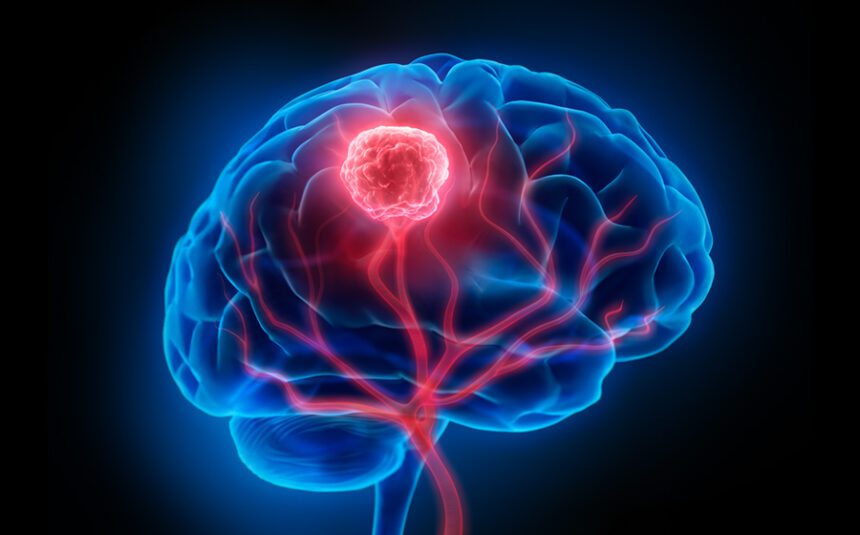It’s frightening to hear a diagnosis of any type of cancer, but it may be especially devastating to find out you have a type of brain tumor called a glioblastoma.
Glioblastomas are classified as a grade 4 glioma, the highest grade, and are highly aggressive, says UNC Health neuro-oncologist Soma Sengupta, MD, PhD.
“They can invade all areas of the brain and spinal cord,” she says.
Because glioblastomas spread so quickly and take up residence in all areas of the brain, prognosis is generally poor. The median survival rate for glioblastoma is 15 months with treatment, and only about 5 percent of patients survive five years. About 12,000 people in the United States receive a diagnosis of glioblastoma each year.
Although these numbers are daunting, researchers and physicians are working to find ways to increase life expectancy and improve quality of life for people with glioblastomas. We talked to Dr. Sengupta about the brain tumor and some of the treatment options.
Glioblastoma Symptoms
“The symptoms will depend on where in the brain the glioblastoma is,” Dr. Sengupta says. “Some people won’t have any symptoms, but others may experience headache, vomiting, seizures, personality changes, weakness on one side of the body or speech issues.”
It’s not clear why most glioblastomas develop, though they tend to be more common in older adults.
Glioblastoma Standard Treatment
The standard treatment for glioblastoma is surgery to remove the tumor, followed by a series of therapies. The nature of most glioblastomas can make surgery difficult; however, UNC uses a technology called 5-ALA that causes the tumor to fluoresce, allowing surgeons to remove the glioblastoma more efficiently. Still, there are microscopic parts of the tumor that can’t be seen.
Once a surgeon removes as much of the tumor as possible, patients heal for a month and then typically begins six weeks of radiation with the chemotherapy pill temozolomide (TMZ). After another month break, imaging is done to assess the tumor, followed by a regimen of TMZ (for five days every month) and imaging (every two to three months). The treatment is continued for 12 months or until the tumor progresses. Tumor-treating fields (TTFields) are also part of the standard treatment, which requires wearing a device that delivers electric fields to the brain that interfere with a tumor’s ability to grow.
Glioblastomas are profiled to detect the presence of certain genes and molecular markers that can affect treatment response. For example, tumors with the presence of a biomarker known as MGMT tend to respond better to TMZ.
Clinical Trials for Glioblastoma
Although treatment can ease symptoms and prolong life, glioblastomas will almost always recur, and so clinical trials and molecular studies are important tools.
A clinical trial offers people the opportunity to pursue a treatment or combination of treatments not yet available to the general public because researchers are still determining their safety and efficacy.
The roles of certain molecular markers are being explored in clinical trials across the country, which means people may be able to access highly specific treatments for their glioblastoma through a clinical trial.
Current clinical trials are investigating immunotherapy, gene therapy, vaccine therapy, stem cell therapy and personalized therapy as treatment options for glioblastoma. Newly diagnosed patients and patients with a tumor recurrence are eligible to participate in clinical trials.
“Clinical trials for glioblastoma are extending life and improving quality of life for many patients,” Dr. Sengupta says. “I have patients who have been able to travel, see their children go to college and write books because of the extra years given to them in a trial.”
Dr. Sengupta is the principal investigator of a clinical trial at UNC Health that is exploring the safety and efficacy of treatment with IGV-001; the form of immunotherapy uses the patient’s tumor cells and a molecule called IMV-001. When IGV-001 is placed in the patient via a small chamber, it’s designed to improve immunity against the tumor.
Other glioblastoma clinical trials at UNC Health are investigating the role of CAR T-cell immunotherapy in glioblastoma when the cancer comes back.
“We’re constantly collaborating with our partners at other academic institutions so we can make sure that patients are in the right study,” Dr. Sengupta says.
No matter which path a person takes, Dr. Sengupta says it’s important to stay positive and seek support in the wake of a diagnosis.
“There are a lot of support groups available so that people can connect with others going through the same treatment,” she says, adding that the American Brain Tumor Association and the Southeastern Brain Tumor Foundation have support groups online. Also, Dr. Sengupta offers an integrative medicine group visit to discuss lifestyle modifications that can help patients improve their quality of life.
If you’re concerned about neurological symptoms, talk to your doctor. Need a doctor? Find one near you. If you are experiencing severe neurological symptoms, call 911 or head to the nearest emergency department.

